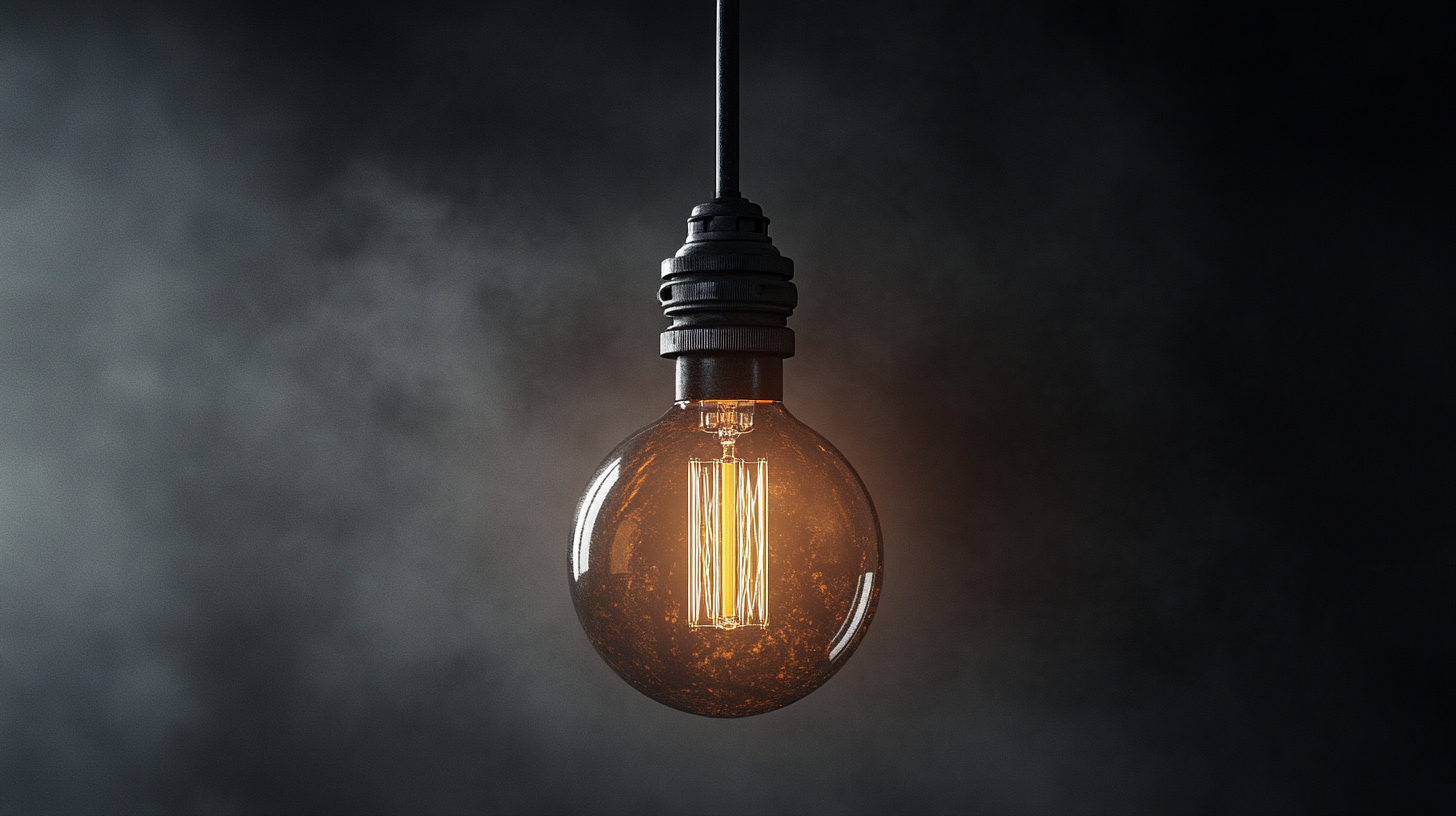Navigating the LED Bulb Market How to Identify Reliable Manufacturers for Your Procurement Needs
The booming market for LED bulbs has transformed the lighting industry, offering consumers and businesses alike improved energy efficiency and longer lifespans. As the shift from traditional incandescent and fluorescent lighting to LED technology accelerates, it becomes crucial for buyers to discern which manufacturers uphold standards of quality and reliability. With myriad options available, navigating this landscape can be daunting, but understanding key factors can simplify the procurement process significantly.
Reliable LED bulb manufacturers not only provide high-quality products but also adhere to safety standards and sustainability practices. As you embark on your search, it's essential to assess credentials, certifications, and industry reputation. This blog aims to equip you with the knowledge to identify trustworthy manufacturers, ensuring that your transition to LED lighting is both efficient and cost-effective. From understanding product specifications to recognizing red flags, we will delve into practical strategies that will empower you to make informed decisions in the LED bulb market.

Understanding the Different Types of LED Bulbs and Their Applications
When it comes to selecting LED bulbs for various applications, understanding the different types available on the market is crucial. According to a report by Allied Market Research, the global LED lighting market was valued at $77.8 billion in 2021 and is projected to reach $162.5 billion by 2030. This rapid growth underscores the increasing reliance on LED technology across multiple sectors, each requiring specific bulb types to meet their unique lighting needs. There are several LED bulb types worth considering, including A19 bulbs, PAR (Parabolic Aluminized Reflector) bulbs, and MR (Multi-Reflector) bulbs. A19 bulbs are among the most common and versatile, with applications ranging from home lighting to commercial spaces. They provide a warm glow and are suitable for fixtures such as table lamps and overhead lights. On the other hand, PAR bulbs are designed for spotlighting and are particularly favored in retail and gallery settings, where directed light is essential to highlight products or artworks. MR bulbs, typically used in recessed lighting and track lighting applications, excel in delivering focused light with minimal glare. According to the U.S. Department of Energy, LED bulbs can last up to 25,000 hours or more, significantly outlasting traditional incandescent options, which typically last around 1,000 hours. As energy efficiency becomes a priority for consumers and businesses alike, these various types of LED bulbs not only provide long-lasting durability but also offer significant energy savings—up to 80% compared to traditional lighting solutions. Understanding these distinctions will enable procurement professionals to select the right LED bulbs tailored to their specific lighting requirements.

Key Factors to Consider When Sourcing LED Bulbs
When sourcing LED bulbs, it's essential to consider several key factors that can help ensure you choose reliable manufacturers. First and foremost, evaluating the manufacturer's certifications can provide insights into their compliance with industry standards. Look for certifications such as Energy Star, CE, or RoHS, which indicate that the products meet specific safety and environmental guidelines. These certifications reflect a commitment to quality and can help you avoid subpar products that may not perform as expected.
Another crucial factor is the manufacturer's reputation in the market. Conducting thorough research by reading reviews, seeking recommendations from industry peers, and checking for any history of complaints or recalls can give you a clearer picture of their reliability. Engaging in discussions with potential suppliers and asking about their production processes, quality assurance measures, and after-sales support can also reveal a lot about their commitment to their customers.
Additionally, consider the product range and technological advancements offered by the manufacturer. Innovations such as smart lighting features or energy-efficient technologies can greatly benefit your procurement needs. A manufacturer that invests in research and development is likely to provide products that not only meet current demands but also adapt to future trends, ensuring your investment remains relevant.

How to Evaluate the Reputation and Reliability of LED Manufacturers
When it comes to navigating the LED bulb market, evaluating the reputation and reliability of manufacturers is paramount. The LED lighting industry has seen exponential growth, with the global market projected to reach $160 billion by 2025, according to a report by Fortune Business Insights. As competition intensifies, not all manufacturers guarantee the same quality or performance, making the assessment of their credibility crucial for procurement needs.
One effective way to evaluate LED manufacturers is to analyze their certifications and adherence to industry standards. For instance, the Philips Lighting report emphasizes the importance of compliance with international standards such as IEC and CE marks, which ensure products meet safety and efficiency parameters. Additionally, checking for ENERGY STAR certification can provide further assurance, as this indicates that the products are not only reliable but also energy-efficient, helping businesses reduce operational costs.
Another key factor in assessing a manufacturer's reliability is customer feedback and reviews. A recent survey from LEDinside shows that 78% of consumers rely on reviews and ratings when selecting LED products. Therefore, exploring feedback from industry insiders and customer experiences can provide deeper insight into a manufacturer’s track record. Moreover, engaging with suppliers who have a transparent supply chain can strengthen the trust in their products, as noted in a recent study by McKinsey, which highlights the need for sustainability in sourcing practices.
In conclusion, by focusing on certifications, customer feedback, and sustainability practices, procurement teams can more effectively navigate the complexities of the LED bulb market, ensuring that the products they choose are not only reliable but also reputable.

Essential Certifications and Standards for Quality LED Products
When delving into the LED bulb market, understanding the essential certifications and standards for quality LED products is crucial for procurement. The industry is rife with varying qualities, and distinguishing reliable manufacturers often hinges on their adherence to recognized standards. Look for certifications such as the Energy Star label, which ensures that the bulbs meet specific energy efficiency criteria, and the UL (Underwriters Laboratories) certification, indicating safety and performance compliance.
Another important certification is the CE mark, which is mandatory in Europe and signifies that products meet safety, health, and environmental protection standards. Additionally, you may encounter the RoHS (Restriction of Hazardous Substances) certification, which confirms that the LED products do not contain harmful levels of specified hazardous materials. These certifications not only guarantee the safety and efficiency of the bulbs but also reflect a manufacturer’s commitment to quality and sustainability.
Furthermore, local and international standards, such as the ANSI (American National Standards Institute) and IEC (International Electrotechnical Commission) guidelines, are pivotal in ensuring product consistency and reliability. Engaging with manufacturers who comply with these standards can help mitigate risks associated with poor-quality products and facilitate a smoother procurement process. By prioritizing these essential certifications, buyers can confidently navigate the LED market and make informed decisions for their lighting needs.
Building Long-term Relationships with Trusted LED Suppliers
When delving into the LED bulb market, establishing long-term relationships with trusted suppliers is crucial for ensuring the quality and reliability of your procurement process. Start by identifying manufacturers with a proven track record in producing durable and efficient LED products. Look for partnerships that prioritize transparency and open communication, as these qualities foster a reliable and supportive business relationship.
One effective strategy for building these relationships is to engage in thorough research and site visits to potential manufacturers. This not only allows you to inspect their production facilities but also provides an opportunity to meet their teams face-to-face. Building rapport with key personnel can lead to better understanding and collaboration, ensuring you are aligned in terms of quality expectations and product specifications.
Additionally, consider suppliers who offer comprehensive support, from product development assistance to after-sales service. A supplier committed to your success will guide you in finding the right solutions for your specific needs, ultimately leading to improved business outcomes. The goal is to create a partnership that evolves over time, where both parties work together towards mutual success, enhancing your business’s reputation in the competitive LED market.

